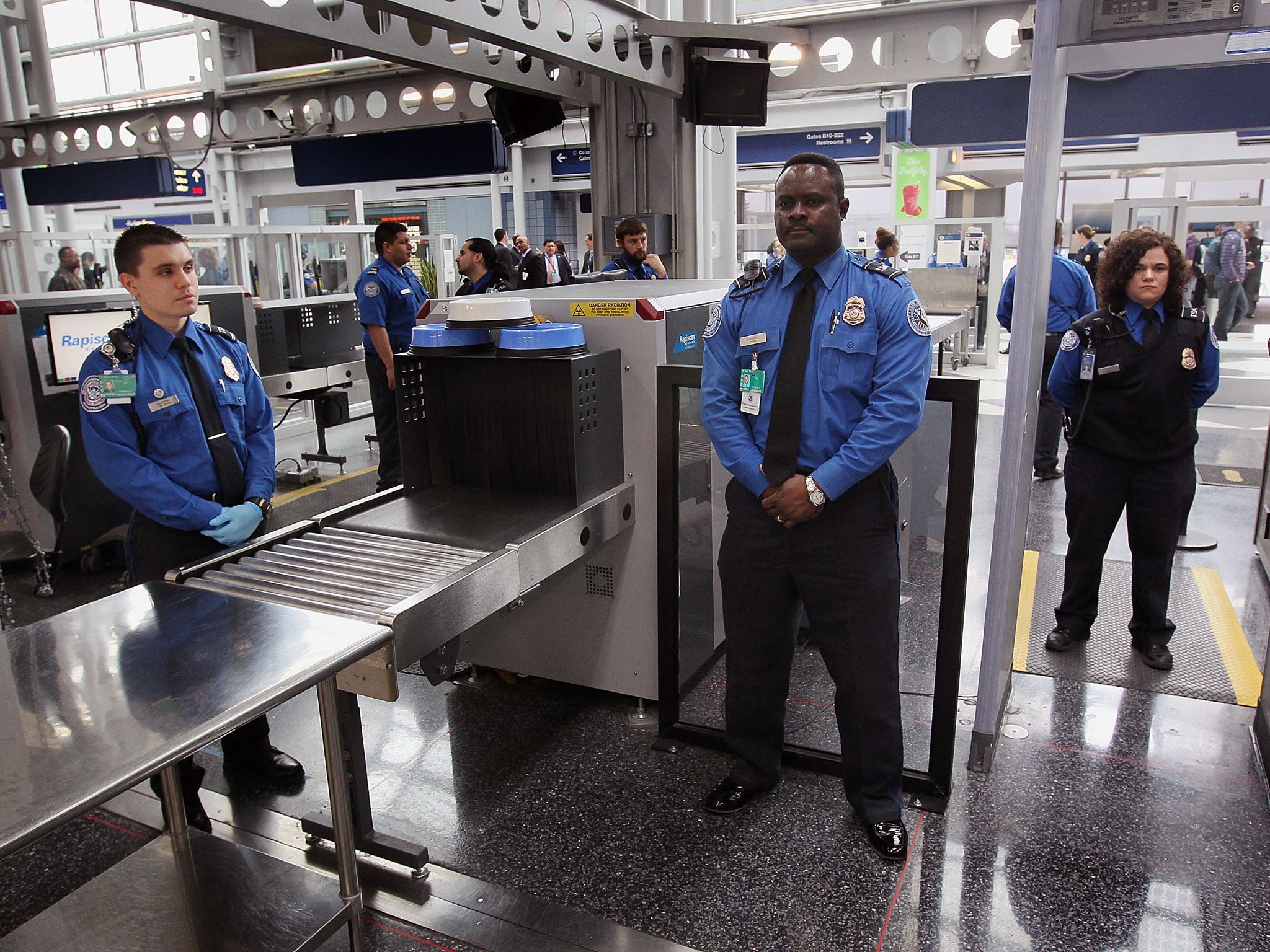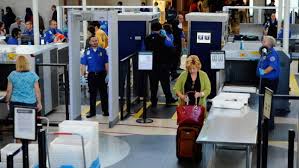Airport Security
Since the earliest days of civil aviation one of the greatest concerns has been the safety of the aircraft and passengers. The 1930 hijacking of a Pan-Am mail plane by Peruvian activists not only shocked the world but raised serious concerns within the aviation industry about its vulnerability to terrorism and a need for strategies to combat air crime. Over the following 50 years, hundreds of hijackings and airport bomb incidents were reported; as a result, security issues had become a significant concern, and created the need for congressional action.
Airport security procedures are designed to deter, and respond to criminal acts that may affect the safety and security of aviation. Most users of commercial service airports are set their safety priority within the airport terminal area, however, airport security is not limited to the terminal area, it concerns all areas and all users of the airport. Many effective security methods have been designed and used in the modern aviation to minimize the occurrence of terrorism incident and damage, those methods included both technology and human using.

On March 18, 1972, the first airport security regulations were made effective, later fomalised within the FAA as Federal Aviation Regulation Part 107-Airport security 6 years later in 1978. Under this regulation, airport operators were required to prepare and submit to the FAA a security program, it should contain several compulsory elements, stated as below:
1. a listing of each air operations area (AOA), that is, those areas used or intended to be used for landing, takeoff, or surface maneuvering of aircraft;
2. identification of those areas with little or no protection against unauthorized access because of a lack of adequate fencing, gates, doors with locking means, or vehicular pedestrian controls;
3. a plan to uprade the security of air operations with a time schedule for each improvement project. (Wells & Young.


Since the earliest days of civil aviation one of the greatest concerns has been the safety of the aircraft and passengers. The 1930 hijacking of a Pan-Am mail plane by Peruvian activists not only shocked the world but raised serious concerns within the aviation industry about its vulnerability to terrorism and a need for strategies to combat air crime. Over the following 50 years, hundreds of hijackings and airport bomb incidents were reported; as a result, security issues had become a significant concern, and created the need for congressional action.
Airport security procedures are designed to deter, and respond to criminal acts that may affect the safety and security of aviation. Most users of commercial service airports are set their safety priority within the airport terminal area, however, airport security is not limited to the terminal area, it concerns all areas and all users of the airport. Many effective security methods have been designed and used in the modern aviation to minimize the occurrence of terrorism incident and damage, those methods included both technology and human using.

The development of Airport Security
On March 18, 1972, the first airport security regulations were made effective, later fomalised within the FAA as Federal Aviation Regulation Part 107-Airport security 6 years later in 1978. Under this regulation, airport operators were required to prepare and submit to the FAA a security program, it should contain several compulsory elements, stated as below:
1. a listing of each air operations area (AOA), that is, those areas used or intended to be used for landing, takeoff, or surface maneuvering of aircraft;
2. identification of those areas with little or no protection against unauthorized access because of a lack of adequate fencing, gates, doors with locking means, or vehicular pedestrian controls;
3. a plan to uprade the security of air operations with a time schedule for each improvement project. (Wells & Young.
Airport Security Technology
After 9/11 terrorist attacks in the U.S, the Transport Security Administration (TSA) has implemented a number of new security systems, in order to increase the security levels at the U.S. airports .
The examples of the recent airport security systems are:
1. Body Scanners
2. Electronic System for Travel Authorization (ESTA)
3. Explosive Detection System (EDS)
4. Dogs
1. Body Scanners
2. Electronic System for Travel Authorization (ESTA)
3. Explosive Detection System (EDS)
4. Dogs
Body Scanner
Passenger screening is critical to the security of the commercial service airports, especially after the incident of September 11, 2001. This process is managed and operated by the Transportation Security Administration (TSA). But the airport managers and planners should also be clearly aware of the security processes; the process has the most important impacts on airport terminal planning and operations in recent years. (Wells & Young,
Passenger screening procedures today focus on finding passengers carrying metallic weapons which could possibly become a threat to the crew, and use it as a hijacking tool to force the plane change the destinations. To provide better information to security screening personnel on the type and location of potential weapons on individuals who trigger metal-detection portal alarms; and increasing the detection capabilities of existing systems by adding the ability to detect a broader spectrum of metals and alloys, plastic explosives, and other threat materials. (Airline Passenger Security Screening.
The current body scanners are more advanced explosive detection machines used for checked baggage to detect hidden weapons and explosives on passengers. These devices useCompton_scattering which require that the passenger stand close to a flat panel and produce a high resolution image .
Dogs
Animals such as dogs are also used as a popular method for airport security. The FAA provided 175 trained explosive-sniffing dogs to operate at 39 U.S. airports at the beginning of 2002. Those trained dogs can work for up to two hours at one time, but take breaks every 20 minutes to rest and recover their sensing ability from the duty routine. The sniffing dogs are preferred to use for checking an aircraft or terminal for bomb threats, or for a bag which needs further inspection, they have the ability to detect both plastic and non-plastic explosives, but there is the need for operators to know which bag contained an explosive and then provide cues to the dogs. Sniffing dogs are usually used as a second tier inspection after a bag is suspected to contain dangerous devices by the operators.

§ Call Us Now -7200081121 / 7200023412 / 7200081330/ 7200015600
§ Email your queries to hr@worldptc.com or admin@worldptc.com
§ Visit website - www.worldptc.com
§ Walk in from Monday to Friday 0900am to 0500pm in the address mentioned below.
§ Address: Chennai - #16/29 1st Main Road, New Colony, Chrompet, Chennai-600044
§ Bangalore – No 410, 2nd floor. 5th A Main, 2nd Block. HRBR layout (Near kalian nagar bus stop) Kalyan nagar, Bangalore 560043. Contact- 8050005079.
§ Email your queries to hr@worldptc.com or admin@worldptc.com
§ Visit website - www.worldptc.com
§ Walk in from Monday to Friday 0900am to 0500pm in the address mentioned below.
§ Address: Chennai - #16/29 1st Main Road, New Colony, Chrompet, Chennai-600044
§ Bangalore – No 410, 2nd floor. 5th A Main, 2nd Block. HRBR layout (Near kalian nagar bus stop) Kalyan nagar, Bangalore 560043. Contact- 8050005079.
- You can watch us on- https://www.youtube.com/watch?v=Xwmmih24k5k
No comments:
Post a Comment